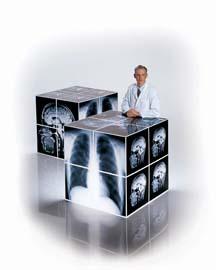
To avoid errors and increase patient safety in radiation therapy, the American Society of Radiologic Technologists (ASRT) published a white paper (“Radiation Therapy Safety: The Critical Role of the Radiation Therapist” by Teresa G Odle, BA, ELS, and Natasha Rosier, MHA, MBA, R.T.(R)(T)) to provide background on the radiation therapist’s role in safe treatment delivery. It explains the challenges faced by therapists in delivery of care and challenges faced by vendors and sites in appropriately training providers on use of clinical equipment. The paper also outlines best practice scenarios and recommendations for radiation therapists, their leadership and industry.
Nearly 1.6 million people in the United States were diagnosed with cancer in 2011 and about two-thirds of these patients likely received radiation therapy treatments during their illnesses. Most radiation treatments occur without incident and contribute to the comfort or cure of cancer patients. Still, advances in technology that provide more sophisticated, promising and accurate techniques for targeting malignancies come with a price: complex technology that requires extensive training, continuing education and attention from the radiation therapists who deliver the radiation.
The consequences of a single error are enormous. Reports, such as the ECRI Institute’s naming of radiation therapy errors as the No. 1 hazard in healthcare, have focused public, professional and regulatory attention on radiation oncology processes, equipment and delivery of care. Professional organizations, vendors and providers are responding to address the challenges faced by ensuring that all of the tools for learning and improving processes are in place to prevent, detect and correct radiation therapy-related errors.
The ASRT is a professional membership organization representing more than 144,000 medical imaging technologists and radiation therapists. The organization provides educational opportunities to members, promotes the radiologic science profession and monitors legislation affecting the profession. In addition, ASRT establishes standards of practice and develops education criteria for medical imaging and radiation therapy professionals.
Patient care and safety remain at the forefront of radiation therapist ethics and practice standards, and safe and effective design, manufacture and operation of radiation oncology equipment remain constant goals for the Foundation’s Health Care Industry Advisory Council (HCIAC) member organizations. However, events such as media reports brought these matters to the surface beginning in January 2010. The Subcommittee on Patient Safety and Quality in Radiation Therapy met in light of these events, but also because of numerous challenges regarding radiation oncology care and commitment to the role of the radiation therapist in patient care.
There has been a heightened perception of medical safety among professionals and the public over the past decade, with mixed perception regarding patient safety in radiation therapy. When The New York Times featured stories of serious radiation overdoses, the errors raised fears in the public and in patients slated to receive radiation therapy. In addition, the complexity of the technology used to deliver radiation treatments has increased exponentially in recent years. This is good news for patients, but only if personnel who maintain and operate the equipment and plan the treatments remain up-to-date on the advances and the skills necessary to work within the technological environments the new modalities and machines require.
These and other factors brought together the subcommittee of concerned radiation therapists, managers and representatives of radiation therapy equipment vendors to discuss the issue in detail and consider cooperative and workable solutions focusing primarily on the areas they represent: the role of the radiation therapist and the support provided to therapists and other radiation oncology staff from equipment vendors.
Several professional organizations responded immediately to the articles in The New York Times, including the ASRT. In a letter to the newspaper’s editor, then-president Diane Mayo, R.T.(R)(CT), reminded readers that although radiation therapy errors are tragic, they are rare. She also pointed out that in 2010, 17 states did not require a license to deliver radiation therapy.
Many organizations also were asked to testify before the U.S. House of Representatives Energy and Commerce Committee’s Subcommittee on Health. ASRT was among these, and was represented by Sandra Hayden, MA, R.T.(T), a member of the ASRT Board of Directors and administrative director of radiation therapy services at the University of Texas, MD Anderson Cancer Center in Houston. Hayden emphasized that establishing national education and certification standards for technical personnel who perform radiation therapy procedures was the best way to ensure quality and safety of the procedures. She mentioned that the solution lies in the Consistency, Accuracy, Responsibility and Excellence in Medical Imaging and Radiation Therapy (CARE) bill before the House. Hayden and the ASRT also called for establishment of consistent and mandatory methods of reporting medical radiation errors.
Other organizations, such as the American Association of Physicists in Medicine (AAPM), the American Society for Radiation Oncology (ASTRO) and the Medical Imaging and Technology Alliance (MITA) have made statements, published white papers or developed initiatives to address safety in radiation therapy.
The ASRT white paper can be accessed at http://www.asrtfoundation.org/media/pdf/HCIAC/ASRT12_WhitePaper.pdf.


 August 09, 2024
August 09, 2024 








